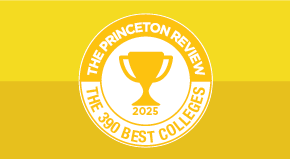- A perfect SAT score is 1600.
- The minimum score is 400.
- The average for the class of 2023 was 1010
What is a “good” SAT test score? That depends on the colleges you’re considering. For Hasan Minhaj of the Netflix show Patriot Act , his score of 1310 — from 16 years ago — was the one to beat. An alumnus of the University of California—Davis , Minhaj wondered if, at age 33, he could earn a score high enough to make him a competitive candidate at Stanford . It’s really hard to take the SAT without any prep — especially when you’ve been busy hosting and executive-producing an original Netflix series! Watch and find out how he fared the second time around:
Most of you reading this aren’t 33 yet; instead, you’re probably looking to take the SAT for the first time. It’s a daunting test, not least because of its length: three hours, not including breaks or the (optional) essay. The Reading section alone is a continuous 65 minutes. That’s a long time to focus! The good news is that with practice, you can sharpen your skills and achieve your own personal “good” score. What number is that, exactly?
The Importance of a Baseline
If you haven’t taken the SAT yet, be like Hasan Minhaj and sign up for a free practice SAT online or at any of our locations across the country.
Comparison #1: Your SAT Score vs. the National Average
If your ultimate SAT score (or superscore ) is close to the national average, then you’ll have a solid chance of gaining admission to a variety of schools. ( Good grades really help! They’re the single most important factor in college admissions decisions.) The higher your SAT score, the better your chances of admission at selective schools will be. Plus, high SAT scores also drive merit-based aid at many schools, so earning an above-average score can also save you lots of money — and spare you from accruing significant college debt.
In contrast, a score that is well below average is considered low at just about any four-year school. You may be able to balance low scores with a standout college application at some colleges, but even if you're accepted, the school may ask you to take some college-readiness courses before enrolling. And you won’t be as likely to earn merit-based financial aid.
Comparison #2: Your SAT Score vs. Typical Scores at Your Target Schools
It matters less how students perform at the national level than how they perform at a few key local levels — namely, your target schools. (These numbers are, of course, related: A selective school will be able to boast student SAT scores that exceed the national average by greater margins than those at its less competitive counterparts.)
Not sure how you measure up? You can use our college search to find the online profiles of schools you want to research. Look up the profiles of the schools on your wishlist, and click over to the “Admissions” tab. Our college profiles report the middle 50% range of test scores for entering first-year students.
Do your scores fall in the lower end of a school's range? That school may be a longshot (though still possible with some SAT prep !). Do your scores fall well within the school's average range? That college or university could be a match! The scores you see are your goals to set — and, ideally, the ones to beat. Remember that the higher you can score, the more likely you are to make yourself eligible for merit-based aid.
The Takeaway
Unless you earned a perfect SAT score, you can always improve your score. Find out your baseline , and then see how it compares to typical scores at your target schools . While colleges consider a lot of factors when they make admissions decisions, standardized test scores are an important piece of your college application. Higher scores mean more college options for you.
A good SAT test score can also help you snag additional merit scholarship money — even at test-optional schools .
Explore Colleges For You
Connect with our featured colleges to find schools that both match your interests and are looking for students like you.
Get Started on Athletic Scholarships & Recruiting!
Join athletes who were discovered, recruited & often received scholarships after connecting with NCSA's 42,000 strong network of coaches.
Best 390 Colleges
168,000 students rate everything from their professors to their campus social scene.
Explore Colleges For You
Connect with our featured colleges to find schools that both match your interests and are looking for students like you.
Get Started on Athletic Scholarships & Recruiting!
Join athletes who were discovered, recruited & often received scholarships after connecting with NCSA's 42,000 strong network of coaches.
Best 390 Colleges
168,000 students rate everything from their professors to their campus social scene.
Explore Colleges For You
Connect with our featured colleges to find schools that both match your interests and are looking for students like you.
Get Started on Athletic Scholarships & Recruiting!
Join athletes who were discovered, recruited & often received scholarships after connecting with NCSA's 42,000 strong network of coaches.
Best 390 Colleges
168,000 students rate everything from their professors to their campus social scene.



